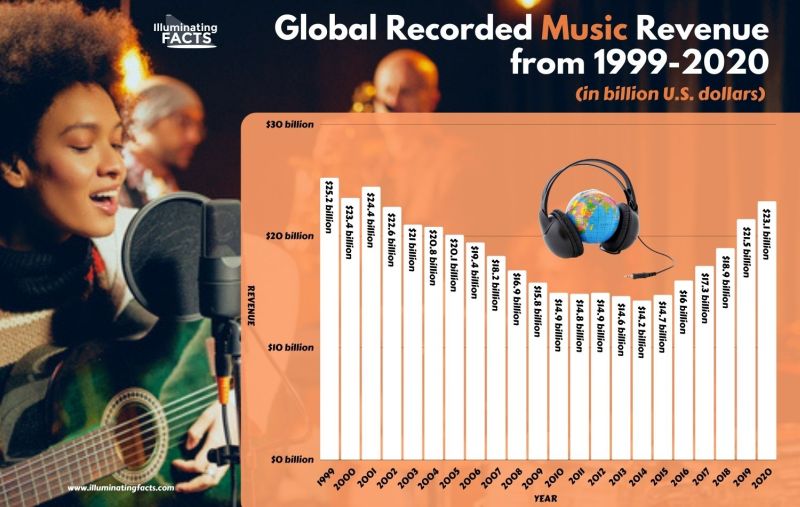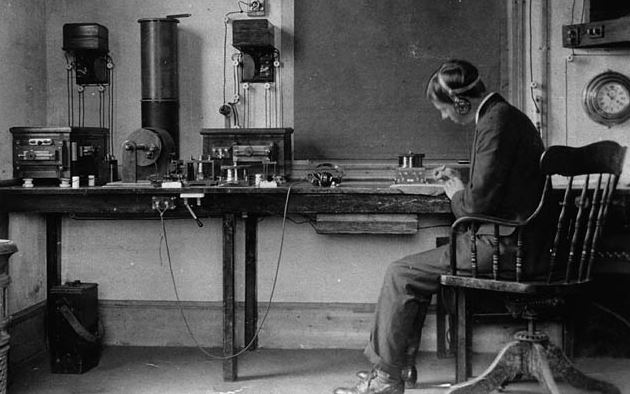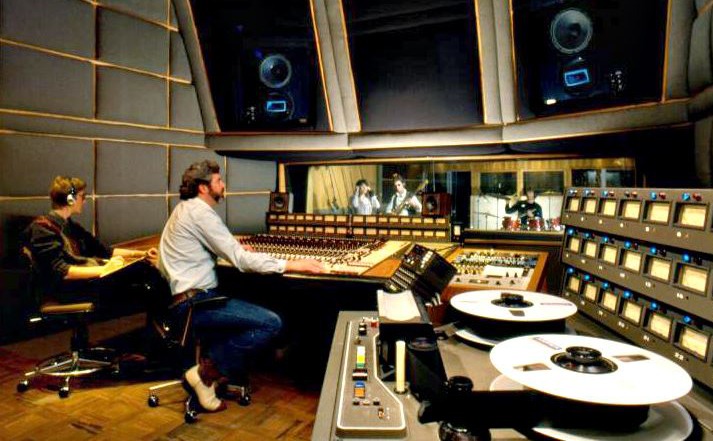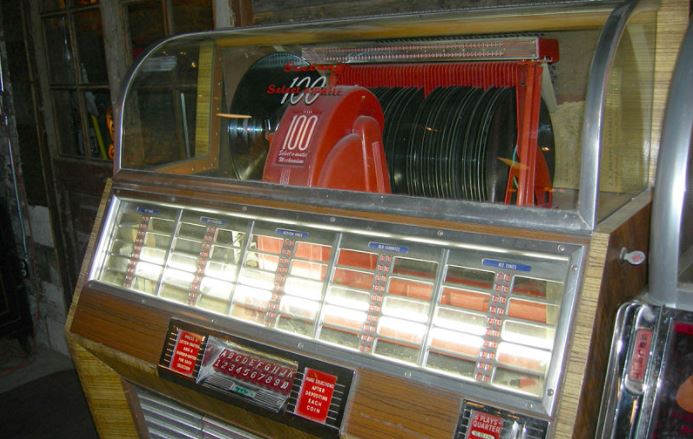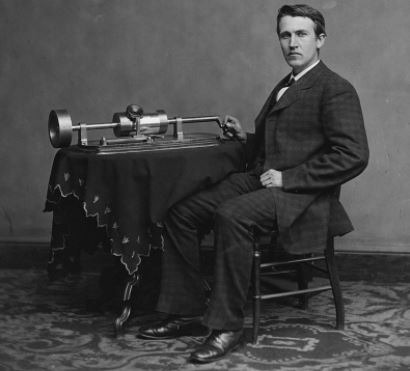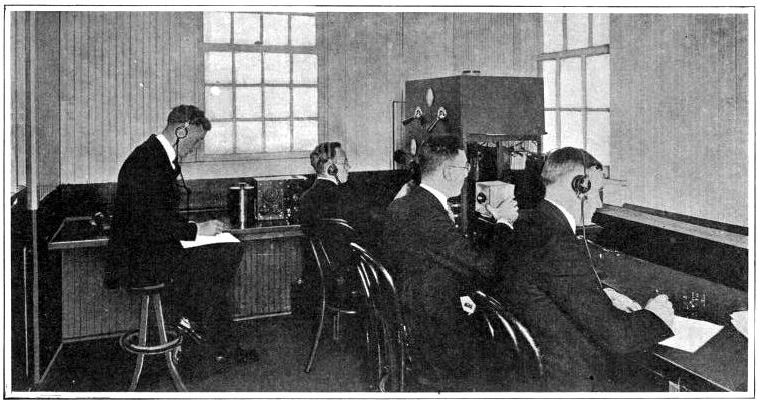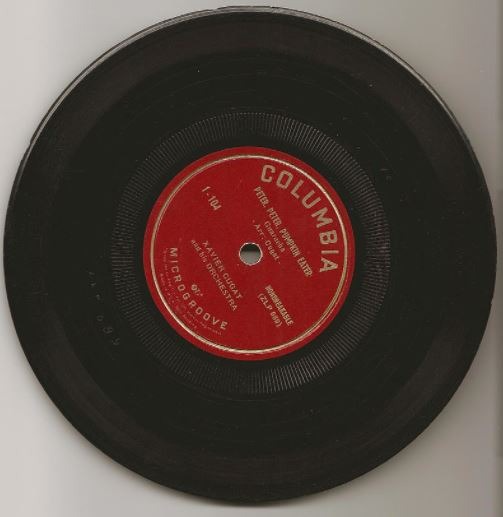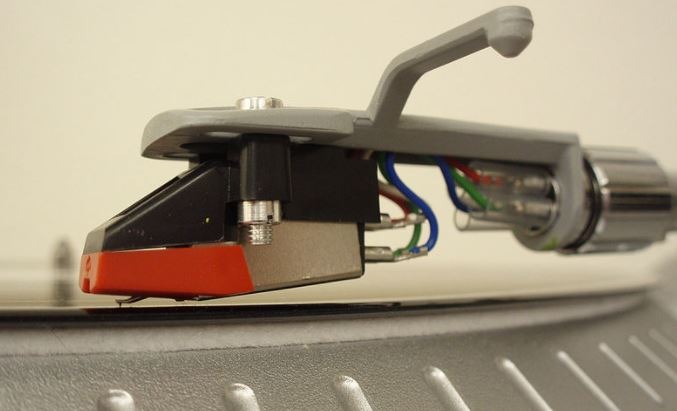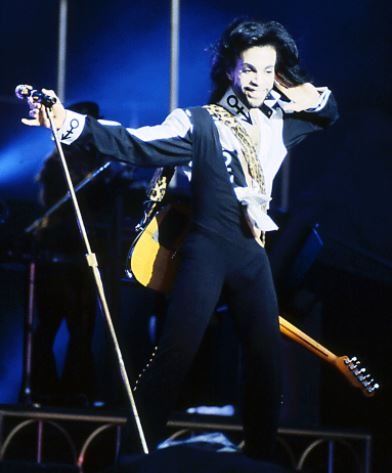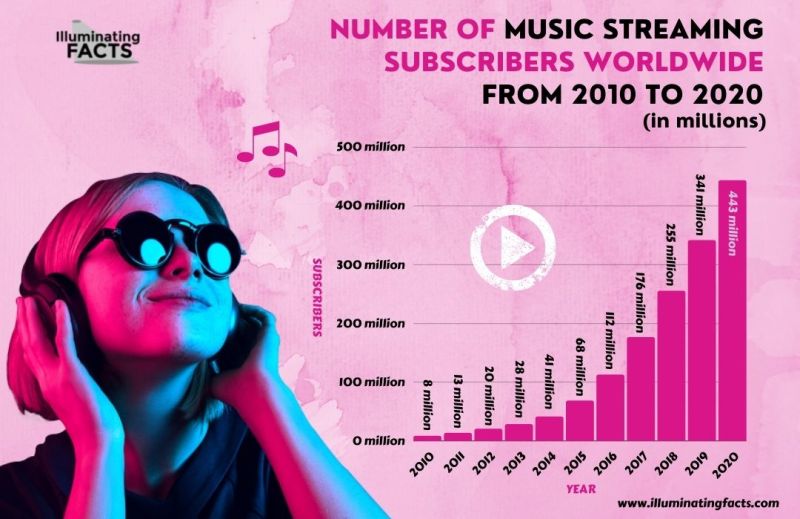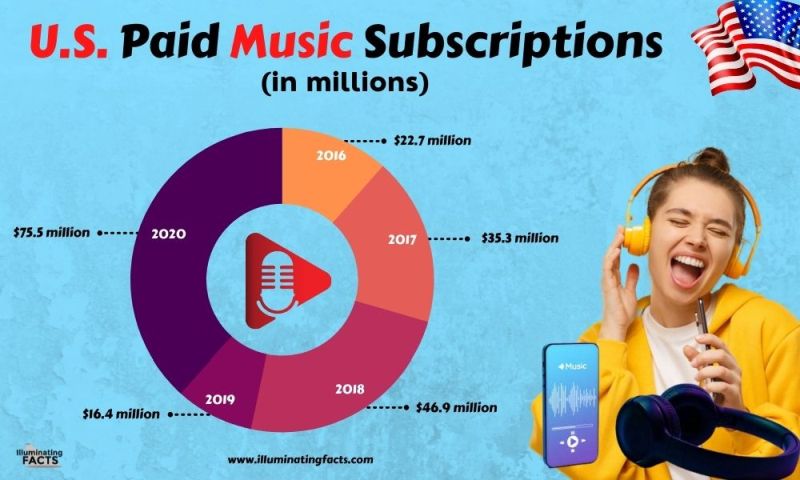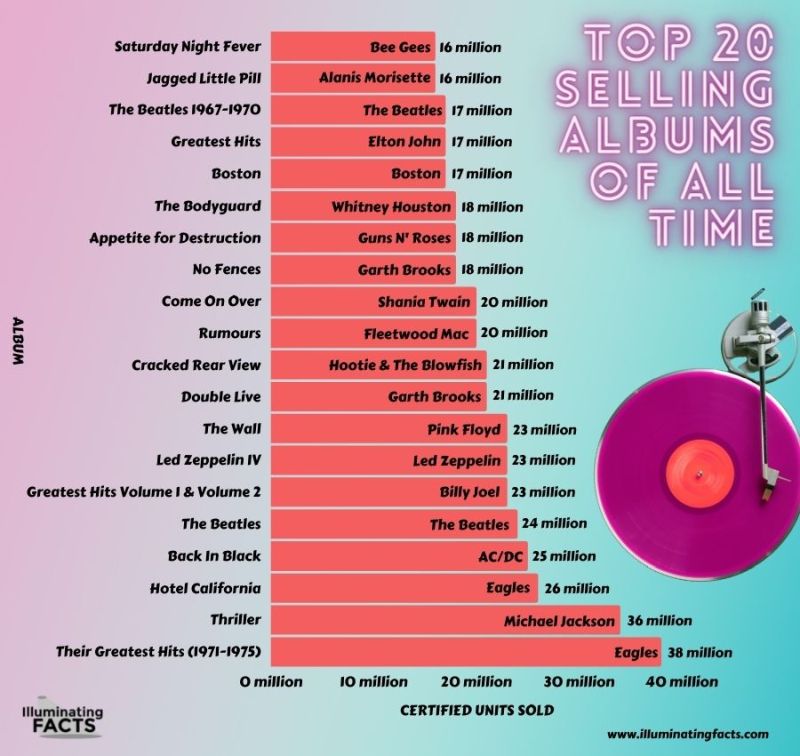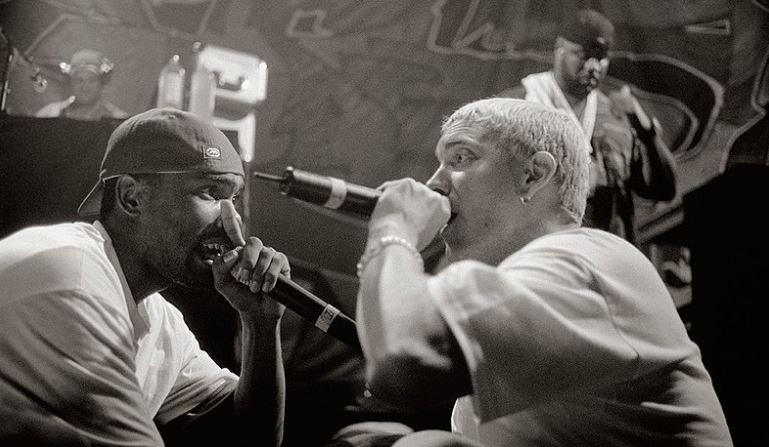Table of Contents
Background
The music industry is a lucrative business. As a vast number of people are fun of listening to music, attending concerts, and downloading the sound, the music industry remains a force to reckon with in terms of profits and cultural influences across global borders.
As a high-level form of art, everyone agrees that music is a powerful and potent force that drives every generation to come together and celebrate it. Whatever the genre or decade, music brings out the emotional and artistic appeal of both the artists and listeners. The complex and diverse forms of music become a symbol or an anthem of the whole generation. From punk to classical, rock in roll to jazz, disco to pop, R&B to hip-hop, tribal to reggae, trance to soul, music remains a vital force that drives people to act, think, feel, and communicate, enriching people’s lives and the pockets of the musicians and the people behind them.

Heavy metal band King Diamond in concert

U2 tour in 2017

Mariah Carey on Caution World Tour

Pop star Taylor Swift in 2007
In 2020 alone, the total revenue of the recorded music industry reached 23.1 billion U.S. dollars. Streaming has the most significant share in this number, comprising 56 percent, resulting in 11.9 billion dollars in revenue globally [1].
History
source: Unknown author, Public domain, via Wikimedia Commons
The evolution of the music industry over the past years is very dramatic. The music industry went into different degrees of change and growth from production to distribution.
For a long time, the music industry has depended on traditional recording companies or labels. The musicians and the consumers were mainly at the mercy of the recording companies. Music production was inherently influenced by the sales and circulations of the records.
The recording company has the first and final say on the career and musical production of the artists. These labels have taken control of the recording, marketing, packaging, promotion, and even the touring schedules.
In one or the other, it was during the earlier time of the music industry that artists and music creators experienced censorship. Labels were the ones in control of what was marketable to the listening public or not [2].
The advent of the internet, or the world wide web, in late 1990 brought an immense change in the music industry.
source: Kyro, CC BY 3.0, via Wikimedia Commons
From the crude way of production, marketing, promotion, sales, tour dates, and music consumption, the internet boom made a crucial impact on how records are consumed and distributed worldwide.
The changes brought by the internet also paved the way for many musicians and creators to grow artistically and economically. The artists have slowly found a medium to benchmark themselves regarding how they will be paid or compensated with every song or record they produce.
source: Fred Lyon fred@fredlyon.com, CC BY-SA 3.0, via Wikimedia Commons
In early 2000, the music industry made a giant leap forward through the global manufacture of mobile phones. As people become attached to their mobile phones, the distribution of music records became increasingly easy. There was a noted shift in the consumption of every song produced by any artist.
The listening public now had more direct access to the records. Consumers no longer depend on what is available in the physical record stores. They are no longer defined by what is available in the market. The music supply around the globe has become more massive, reaching every consumer in every corner of the world through their mobile phones.
While mobile phones dominated how people accessed music during this period, musicians and consumers still do not have a direct relationship. Music creators and consumers still do not have a significant opportunity to talk or interact with the music they buy or hear.
In this sense, musicians are still remote from their fans, so they do not entirely talk to each other. Meetings between artists and consumers were mostly done during meet-and-greets or at the touring and concert areas.
However, the music industry made another giant step in production, circulation, and promotion as the 2010s started to set in.
The coming of smartphones and social media made everything available to the public. Social media opened the floodgates regarding connections and relationships between the artists, recording studios, and consumers.
Social media makes everything visible and vibrant in the music industry. A music landscape full of possibilities has emerged. The walls that divide the music creators, producers, and listeners crumble to the ground. Each now has a voice and medium to use. Social media made everything possible regarding how music is promoted across boundaries.
The result was unprecedented. Consumers now have an unlimited source of music and artists. At the same time, music creators now have total reach to their audience to be entertained.
Overall timeline in the music industry
It is interesting to know how the records were sold during the early years of the music industry. In 1895, the first records were sold. The presence of amplifiers happened in 1907 [3].
However, the record player and its amplifications did not happen until 1925. Most households do not have direct access to these amplified records. In the 1930s, jukeboxes ruled in the records in the USA.
In the 1950s and 1960s, amplified records became widely available in every household.
source: Joe Mabel, CC BY-SA 3.0, via Wikimedia Commons
In 1954, the first portable music player or transistor radio became available. Stereos became ubiquitous in the late 1960s. This is the period when pop music from corporate recording companies became relentless.
The CDs found themselves in the market in the early 1980s. It made the final and most significant phase of sales in music records. Finally, the costly physical record album had its competition with the boom of music downloads in the 2000s. This also paved the way for cheaper and more accessible single music formats for consumers.
Milestones in Technology and the Music Industry
1877-Thomas Edison recorded the human voice
Thomas Edison accidentally discovered the recording of human sound while experimenting with his new telegraph device using tin foil. The familiar nursery rhyme “Mary Had A Little Lamb” was recorded by Edison on the first working phonograph. He became the first inventor to successfully put the human voice onto a record [4].
1885-Chichester Bell and Charles Tainter challenged the phonograph with the graphophone
As rivals to Edison, the two inventors challenged Edison’s phonograph by creating a sound while an engraved wax cylinder rotated against a stylus.
1888- Emile Berliner invented the gramophone
Berliner used a disc instead of a cylinder to record the sound. The discs, which measured 7 inches in diameter, were flat and could record the sound for up to 2 minutes.
1890s-Nickel jukebox became extremely famous
The Columbia Phonograph Company came up with nickel jukeboxes after getting little success in its graphophone leasing business. In 1894, it changed its name to Columbia Graphophone Company and made a mark in the popularity of jukeboxes. However, the machines did not come into the mass production level because of the bulky cylinders in the graphophone.
1900s- The explosion of copyright infringement on recorded music
When the new century came in, record producers and musicians started to run after those with questionable copyright records. This happened as more music production became dynamic and clear as production techniques for cylinder and disc made a leap in their development.
As the music business started taking off, the piano became more popular. The piano became a rival to the graphophone and gramophone.
As the demand for pre-recorded sound soared high during this period, music publishers brought their cases against those who reproduced music on the piano scrolls to the courts.
However, the U.S. Supreme Court declared that copyrights protected only the songs that could be read by the human eye, exempting piano rolls and other machine-produced sounds. The US Congress then passed a law that ordered royalties to the publishers who reproduced songs mechanically.
1906-The end of the cylinder era
The technological advancements in disc recording defeated the playback capabilities of the cylinder. The 78 started to rule in 1901. It was known as 78, following its rotational speed of 78 rotations per minute (rpm). The 78 is 10 inches in diameter. In 1910, the disc became widely available in 7, 10, 12, 14, 16, and 21-inch formats, playing at around 78 rpm. The 78 formats lasted until 1974.
With the bulky size of the cylinder, its era ended in 1906, following the Victor Talking Machine Company’s “Victrola” entry. The music machine, which was an adaptation of a phonograph, can easily fit within the home. It then became the best-selling record player of the said era.
source: Norman Bruderhofer, CC BY-SA 2.5, via Wikimedia Commons
1920- Radio Corporation of America started mass-producing commercial radios
The KDKA in Pittsburgh, Pa., became the first commercial radio station with a regular broadcast with the presidential election returns. It also started to accept call letters. While the sound reception quality was inferior to the disc quality during the period, the recording companies made contracts to disallow top artists from working on the opposing side. Sales of music records suffered a lot during this period.
1925- The reproduction of fidelity recordings
As record sales started to decrease, the music industry worked hard to boost its sound fidelity.
The Bell Telephone Laboratories introduced electrical amplification in 1925. This paved the way for the sale of the first electrically recorded discs. Victor also came up with new recording machines designed with full electronic playback, paving the return of record sales in the market.
1930s-Decline of music records due to the Great Depression
The music industry experienced a massive decrease in production, promotion, and sales during the Great Depression.
RCA bought Victor in 1928, paving the way for the creation of RCA Victor. Transcription discs — vinyl Vitrolac discs were produced. The discs can rotate at 33 1/3 rpm and be used to pre-record radio. However, most commercial record companies ignored Vitrolac discs due to the economic crash during the period.
While tape recording cartridges were developed in 1930, the tapes were not given enough attention as the economic problems persisted until the 1950s. Moreover, the presence of free radio broadcasts brought another decrease in record sales and promotion.
1933-Introduction of FM Radio
In 1933, the Frequency-modulated (FM) radio came into being. Unlike Amplitude-modulated (AM) radio, FM radio became more marketable due to less static sound and higher sound fidelity. Also, FM radio only needed less power transmittal. Edwin Armstrong invented the FM radio.
1943-Vinyl became a popular material for music production
Polyvinyl chloride, PVC or vinyl, became a popular material for record production. The vinyl records were proven durable compared to discs made from shellac, especially during World War 2.
source: DigbyDalton, CC BY-SA 4.0, via Wikimedia Commons
1948-New record format emerged through the long-playing (LP) Vinylite record
In 1948, Columbia came up with the first 12-inch, 33 1/3 rpm microgroove long-playing Vinylite record. The LP became a hit in the music market.
However, RCA also introduced its own 7-inch disc with Vinylite and microgroove, which became a standard format for the jukebox.
RCA released records on the 12-inch Columbia format in 1950. Columbia also came up with a 7-inch RCA format in 1951. While 78 rpm discs were still available during the period, recording companies found a hard time choosing the standard speed for playing records.
source: Michelle Hawkins-Thiel, CC BY 2.0, via Wikimedia Commons
1964-The boom of cassette tapes
While the cassette tape cartridge was already invented for transcription reasons in 1930, it gradually found a place in music recording as a potential format. The Germans also developed the same technology. The US adopted and built the cassette tape technology until it introduced the first portable audio tape recorders in 1951.
Interestingly, RCA offered cassette tapes for $1 more than the price tag of the vinyl album in 1958.
However, Philips introduced its 30-minute format for the tape cartridge in 1964. The company also allowed the rival manufacturers to copy the cassette tape specifications.
The opportunity to duplicate the cartridge made by Philips paved the way for standardizing cassette tapes. The tapes eventually became a portable and cheap recording format.
As the blank tape only cost about $3 compared to a vinyl album at $6, many recording companies feared that the cassette tapes would affect music sales.
1966- The 8-track came out on the market
The 8-track format challenged the 4-track tape cartridge developed in 1956. It was designed to solve the problems with 4-track tapes, particularly with jamming and accessibility of individual tracks.
1970s—Music companies challenged cassette recording
Sound recordings were covered by copyright protection by passing the 1971 Sound Recording Amendment to the 1909 Copyright Statute. The U.S. Congress declared copyright protection as the music industry complained about bootlegging of records, citing revenue loss.
1979-Introduction of Sony Walkman
The Sony Walkman was a revolutionary invention in 1979. Its entry into the music market also coincided with the enhancement and refinement of sound quality. The cassette tape became popular as the Walkman only allowed the cassette format to play the sounds while you were on the go.
During this period, the Recording Industry Association of America (RIAA) fought back against the increased taxes on blank tapes.
1980s-The uniform standard for a Compact Disc (CD)
In 1978, Philips and Sony introduced the idea of working hand in hand with a consistent standard for a compact disc. In 1982, the record companies declared that all CDs would play on all types of CD players.
In 1982, Billy Joel’s 52nd Street made a global record as the first CD released worldwide. The CD surpassed the sales of LP by 1988.
CDs continued to dominate in the music industry, the listening public started to ditch their vinyl records in exchange for CDs.
1987-Digital Audio Tape protests
The Digital Audio Tape (DAT), which was introduced shortly after the CD, faced instant opposition from record publishers and composers. They were afraid of piracy following the excellent recording and duplication quality of Digital Audio Tape.
1990—The advent of MP3
Thanks to the internet boom, the Moving Picture Experts Group-1, Layer-3 (MP3) became a hit in 1990. The recording format can compress digital audio records size, which can be transmitted fast from one computer to another without any trouble with the recording quality.
1992—Introduction of Audio Home Recording Act
In 1992, the Audio Home Recording Act was introduced. The law required digital recorder manufacturers to pay copyright holders a 2 percent royalty rate. In this manner, the payment will compensate for the ease of piracy allowed in digital recording.
1995-The start of Internet audio streaming
In 1995, RealAudio successfully launched the first significant streaming audio service. As opposed to downloading music records, audio streaming became a hit in 1995 amidst poor recording quality.
1997—Initial steps for Internet-based music selling
source: jimieye from flickr.com – https://www.flickr.com/photos/jimieye/, CC BY 2.0, via Wikimedia Commons
Capitol Records opened the idea of exploring the internet in selling music. It announced the downloadable format of a single from the new Duran Duran record a month earlier than the album’s release in retail music stores.
Unfortunately, the music retail stores saw the plan as a “threat” to album sales. In the end, Capitol Records gave up the idea and delayed the single’s release on the internet. Instead, it released the track online together with the release of the album in record stores.
Interestingly, the Artist Formerly Known as Prince opened the plan to release his next album through the internet in August 1997.
His move is a milestone in the music industry as music creators became more independent from the financial grip of their record producers, companies, and even music stores.
The Artist Formerly Known as Prince was able to successfully sell 100,000 albums without the help of any record label.
1998- Battles on Internet piracy took place
In 1998, at least three unnamed Internet pirates were accused of uploading audio records from hundreds of music artists. The situation allowed everyone to virtually download and get a copy of the songs without any fee.
However, an agreement took place between RIAA and the music pirates. The pirates agreed not to post the tracks again while the RIAA waived their fines which amounted to more than $1 million per violation.
However, in 2004, the RIAA tried to file cases against 1,977 personalities for allegedly sharing music tracks on file-sharing sites.
1999-Introduction of Napster
In May 1999, Shawn Fanning and Sean Parker introduced Napster, a peer-to-peer file-sharing network.
However, the RIAA sued Napster in December 1999 for alleged copyright infringement. The popular heavy metal band Metallica and rapper Dr. Dre also levied the same charges against Napster. After years of court hearings, Napster was ordered to remove all copyrighted material from its network in 2001. After that, the network also stopped its services.
Other peer-to-peer file-sharing services, like Kazaa, Morpheus, and Grokster, also faced legal battles from RIAA.
2003-The birth of iTunes
Apple Computer introduced iTunes in 2003. It became the world’s most successful online music store until today. During its first year, Apple sold 70 million songs at $0.99 per song. The store paved the way for nearly $70 million in legal Internet music revenues.
Meanwhile, the new online market became a new challenge to music producers and creators on how long it will change the music landscape against the CD sales in the market and how people consume music.
Number of Music Streaming Subscribers Worldwide
Top 10 Careers in the Music Business
source: Victorgrigas, CC BY-SA 3.0, via Wikimedia Commons
The music business is a money-making business. Thus, it is ripe with income opportunities. Having a career in music opens one’s doors to plenty of possibilities. The music industry is filled with people with diverse backgrounds. Still, together they performed essential roles in the success of the performance, production, marketing, and sales of every artist and their record. The more versatile you are, the more opportunities you will find in the music business [5].
Despite the inherent competition in the music business, career growth in the industry is always available. Below are the career opportunities and salary information based on the 2016 Edition of Music Careers Dollars and Cents by the Career Development Center at Berklee College of Music.
U.S. Paid Music Subscription
1. Music Producer
A music producer works on the commercial and creative part of the business. He also promotes ties between the artist and the record label.
Expected income: $25,000 – $1,000,000+
2. Recording Engineer
A recording engineer takes charge of the technical part of recording the sound in the studio.
Expected income: $25,000 – $150,000+
3. Session Musician
A session musician serves as a backup performer to other artists’ albums or performs with various musicians on stage.
Expected income: $100 – $2,500 per day or up to $100,000+
The American Federation of Musicians (AFofM) specifies the minimum rate
4. Artist Manager
An artist manager works toward building opportunities and connections and launching the musical act forward in the music industry.
Expected income: 10 -50 percent of the artist’s earnings
$30,000 – $200,000 for a developing artist
$2,000,000 – $10,000,000 for a mega-successful artist
5. Tour Manager
A tour manager works behind the scenes in every part of the band’s career on the road, from the tour’s transportation, accommodation, scheduling, and finances.
Expected income: $2,500 – $10,000 per week for theater/arena-level touring
6. Music Teacher
Music teacher works in various aspects, either in a music shop, school, or private instructor.
Expected income:
Private Music Instructor
$30-$120 per hour for studio teacher/private instructor
NOTE: The lesson fee should reflect the amount of teaching experience and the going rate in a region. Be aware that building a profitable clientele may take some time. Traveling to a private student’s home may require an additional fee.
K-12 Public School Music Teacher
$30,000-$71,181
NOTE: Requires state certification. Property taxes mainly support schools, so schools in wealthier communities are typically able to pay more.
7. Music Professor
$43,140 -$67,360+ for an assistant professor (full-time on a tenure track)
NOTE: Salary depends on the institution’s size, budget, and teacher reputation. At least a master’s degree is required, more often a Ph.D.
Booking Agent
A booking agent works on many logistics, from live performances to securing concert venues, negotiating deals, arranging technical equipment, and hospitality.
Expected income: $20,000 – $3,000,000
Commissions range, typically 10-20 percent of the act’s gross income per show.
$50,000 for a developing artist
$500,000 – $3,000,000 for a star
$50,000 – $250,000/Booking Specialty Agent
8. Music Publicist
A music publicist facilitates the band’s releases, concerts, and other announcements through media outlets, marketers, and venues.
Expected income: $500-$10,000 per month
9. Composer
A piece of sheet music on piano keys.
A composer writes and arranges recorded or live music across genres.
Expected income:
Composers are usually paid on a per-project basis.
Television Composer
$1,500-$7,500+ for a 30-minute episode
$2,000-$15,000+ for a 60-minute episode
$2,000-$55,000+ for a TV movie
Film Score Composer
$0-$10,000+ for a student film
$2,500-$500,000+ for an indie feature
$35,000-$2mil+ for a studio feature
Video Game Composer
$30,000-$75,000+ for Creative Fee deal – interactive game (30 min. of music)
$30,000-$60,000+ for Package Fee deal – interactive game (30 min. of music) – covers composing and all expenses
$300-$600 per minute of finished music for casual games (creative fee only)
10. Music Arranger
A music arranger takes charge of taking a piece of written music and reorganizing or arranging it to arrive at a new sound or record goal.
Expected income: $20,000-$43,000+
Top 20 Selling Albums of All Time
source: MikaV, CC BY-SA 4.0, via Wikimedia Commons
source: Raph_PH, CC BY 2.0, via Wikimedia Commons
The 20 Best Selling Music Singles of All Time
Some Amazing Music Industry Facts and Numbers
The music industry is a powerful force in a person’s economic, personal, and socio-cultural growth. Music influences the general population in various aspects. Below are some interesting facts about the music industry [7]:
- YouTube Music app was downloaded a staggering 13.3 million times from Google Play alone in 2019.
- Music videos on YouTube can go viral in hours and hit over 100 million views in less than a couple of days.
- According to research, listening to pop music can promote just like hip-hop and rap.
- People with high intelligence love to listen to heavy music.
- in 2019 alone, the total revenue of the recorded music industry reached about $21.5 billion.
- According to recent music streaming data, music streaming is expected to reach an annual growth of 20.7%.
- Sales of vinyl record sales are still up in the market despite the prediction of its doom. In 2015 alone, vinyl records generated a whopping $416 million in sales.
- By 2023, the live music industry is seen to generate a revenue of $31.49 billion.
- About 70,000 jobs are lost in the US every year due to piracy, according to DataProt’s gathered movie and music piracy statistics.
- According to the Children’s Music Workshop website, schools with music programs have a graduation rate of around 90.2% with a 93.9% attendance rate. Also, high school students who study music excelled in English and Math exams.
The 20 Best-Selling Music Artists of all time
Below are the 20 best-selling music artists of all time in America by album sales, as reported by Business Insider [6]:
Share of Total Sales Volume By Format and Genre
Source: 2020 MRC Data/Billboard [8]
References:
[1] Statistica.com, 2021. Global Revenue of the Music Industry. Available at https://www.statista.com/statistics/272305/global-revenue-of-the-music-industry/ [Accessed November 8, 2021].
[2] Forbes.com, 2021. The Evolution Of The Music Industry — And What It Means For Marketing Yourself As A Musician. Available at https://www.forbes.com/sites/forbesbusinesscouncil/2021/09/13/the-evolution-of-the-music-industry—and-what-it-means-for-marketing-yourself-as-a-musician/?sh=1c4a444c297a [Accessed November 5, 2021].
[3] Bemuso.com. Music business timeline: 150 years of technology, radio, recording and music. Available at http://www.bemuso.com/musicbiz/musicbusinesstimeline.html [Accessed November 9, 2021].
[4] PBS.org, 2004. Chronology: Technology and the Music Industry. Available at https://www.pbs.org/wgbh/pages/frontline/shows/music/inside/cron.html [Accessed November 12, 2021].
[5] Berklee.edu. Top 10 Careers in the Music Business (and How Much Money You Can Make). Available at https://online.berklee.edu/takenote/top-10-careers-in-the-music-business-and-how-much-money-you-can-make/ [Accessed November 9, 2021].
[6] Business Insider, 2021. The 50 best-selling music artists of all time. Available at https://www.businessinsider.com/best-selling-music-artists-of-all-time-2016-9 [Accessed November 9, 2021].
[7] Modern Gentlemen.net, 2021. Music for Your Ears: 21 Music Industry Statistics for 2021. Available at https://moderngentlemen.net/music-industry-statistics/ [Accessed November 9, 2021].
[8] Music Business Worldwide.com, 2021. MRC Data’s 2020 U.S. Year-End Report. Available at https://www.musicbusinessworldwide.com/files/2021/01/MRC_Billboard_YEAR_END_2020_US-Final.pdf [Accessed November 8, 2021].



